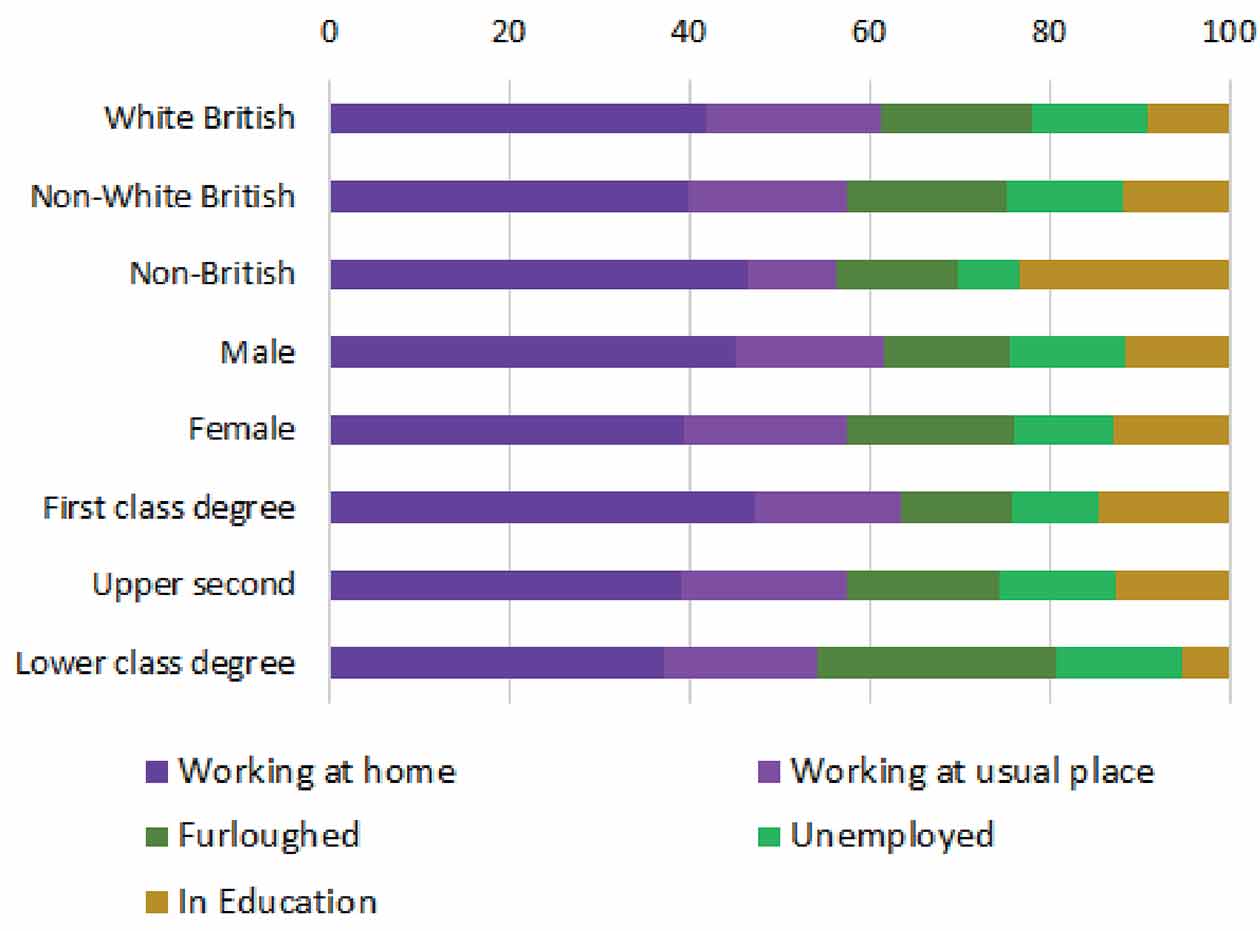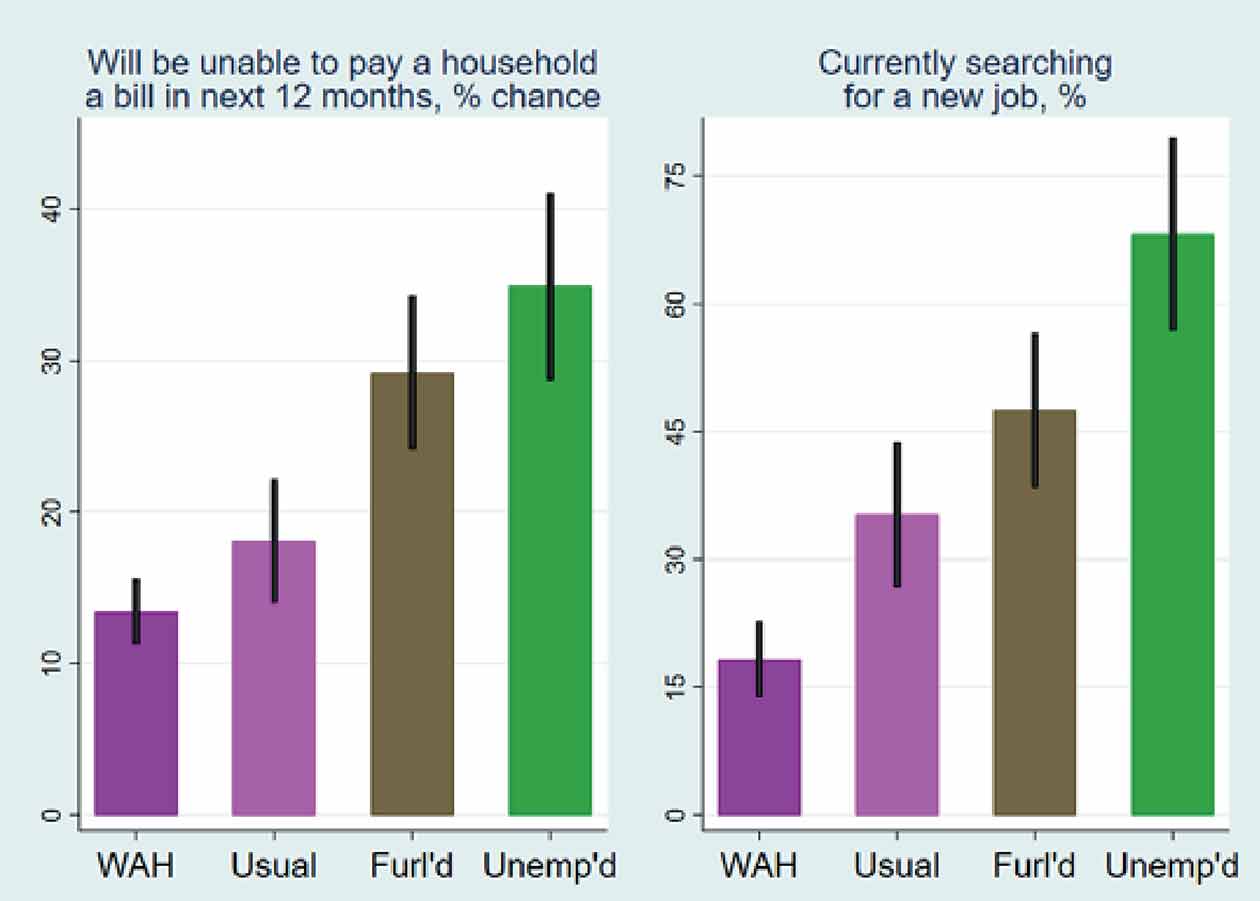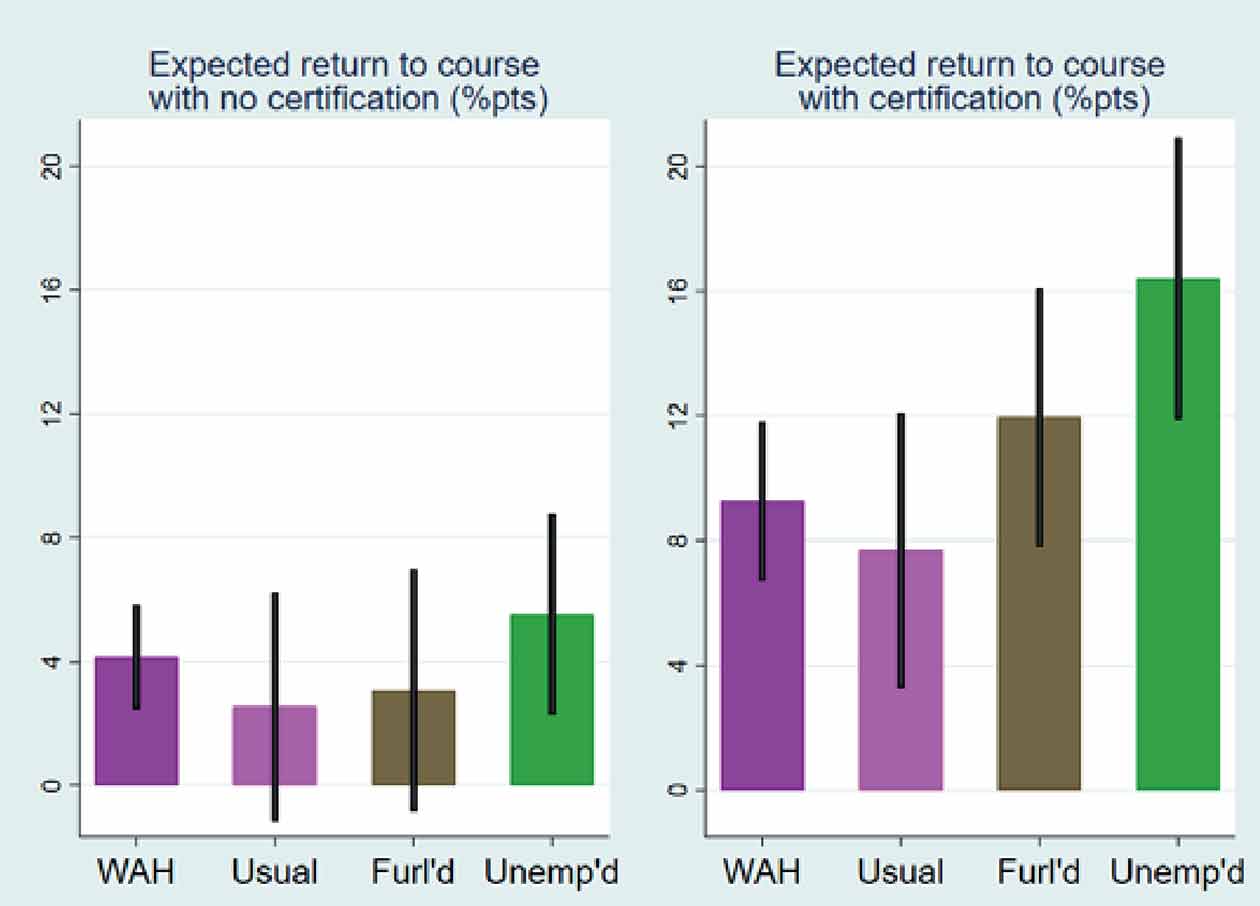Introduction
Almost one out of three recent graduates were on furlough or unemployed during the first UK COVID-19 lockdown.
These graduates were worried about their job prospects and financial futures, more so than those still in work. Possibly in response to this, they also reported a higher participation in additional training courses since the start of the pandemic.
Furloughed workers and the unemployed were also more aware of the importance of credentials and certification for
signalling skills and raising their employment prospects. The cost of training does appear to be a major deterrent to all groups, however.
Main findings
The BOOST2018 ‘Life after University’ study was conducted in June 2020 and surveyed UK-domiciled graduates from the 2018 and 2019 cohorts at one university.
At that time, three months into the first UK COVID-19 lockdown, 42% were working at home, 17% at their usual place, 17% were furloughed, 12% unemployed, and 12% in full- time education.
Graduates with higher degree class were more likely to be insulated from the employment risks of COVID-19 by either being in work they could do from home, or by having continued in full-time education. Those with lower degree classes were correspondingly more likely to have been furloughed or unemployed. Male graduates were slightly more likely to be working from home and less likely to be put on furlough than female graduates, but the percentage unemployed was very similar. Among British graduates, there were no major differences in activity status by ethnicity (Figure 1).

Unsurprisingly, those who were unemployed were most worried about their future finances and were most likely to be looking for a job (Figure 2). But despite furloughed workers receiving at least 80% of their wages at the time, they were almost as pessimistic about their ability to pay household bills over the next year as the unemployed, and 45% were actively seeking other job opportunities. The figure for those working in their usual place was 35% and for those working at home was 17%, respectively.

Few saw the option of returning to full-time education in the next 12 months as a means potentially to ‘sit out’ the recession, though those working in their usual place or on furlough (12% and 9% chance respectively) thought this more likely than those who were unemployed (4% chance).
Another way in which individuals can improve their employability is to take a training course to acquire or improve
their skills and knowledge. A significant proportion of recent graduates had done so between March and June 2020,
with furloughed workers leading the trend (18%) and those unemployed close behind (15%). By contrast, relatively few graduates in work had taken any training (the typical course consisted of 20 hours of instructions spread over 3 weeks), with no significant difference between those working at home (10%) or at their usual place (8%).
All four groups intended to take a short training course in the ensuing three months, reporting an average probability of doing so of 54%. The groups differed in what type of course they would engage in, however. Those in work or furloughed were more likely to indicate they would target general skills (such as ‘problem- solving’ or ‘negotiating and influencing’) than those currently unemployed (42%). The latter group were correspondingly more likely to target their training towards a specific area, with IT and Computer Science the leading category.
All groups on average expected that taking a training course would improve their level of skills, their ability to signal this skill to prospective employers, and ultimately to increase their probability of being employed in 12 months’ time. Even so, the expected gains for courses without a credential or certificate are relatively small (Figure 3, left panel). On the other hand, employability returns to courses with a certification (Figure 3, right panel) were perceived to be much larger especially by unemployed individuals or those on furlough.
All groups expected courses with a certification to be harder work than those without assessment or credentials, as they reported lower expected enjoyment from the former (49-55% would enjoy it) than the latter (65-75%). Despite this, all groups reported a higher probability of participating in training with a certificate than without: 70% vs. 51% for a free course, 45% vs. 25% for a course costing £100, and 32% vs. 16% for a course costing £300.
Monetary costs seem to matter instead. A fee of £100 would reduce the expected probability of taking a training
course in the next three months by 25-29 percentage points compared with a free course; a £300 cost tag would reduce training intentions by another 10 percentage points. Moreover, unemployed graduates report to be more price sensitive than those who are currently working or on furlough and they obviously have no access to employer-provided training.
Authors’ main message
Overall, the survey paints a clear picture. Recent graduates are facing significant uncertainty about their labour market prospects and are looking for opportunities to engage in further training, with those facing the most difficult circumstances (the unemployed) looking to acquire skills that might provide more flexibility in working arrangements, such as digital skills.
There is a broad understanding that training per se might provide small benefits unless it is accompanied by a certification. The costs of acquiring new skills through certified courses are clearly higher in terms of effort, but this is not a significant barrier to uptake. The most relevant potential deterrent appears to be the monetary element, which could prove to be a significant obstacle especially for those who need this opportunity the most.

Note WAH is ‘Working at home’, Usual is ‘Working at usual place’, Furl’d is ‘Furloughed’, Unemp’d is ‘Unemployed’. Expected returns are the expected probability of working full time in 12 months if taking a course with no certification (left) or with certification (right) minus their expected probability of working full time in 12 months if they take no further training.
© MiSoC March 2021
DOI: 10.5526/misoc-2021-001
